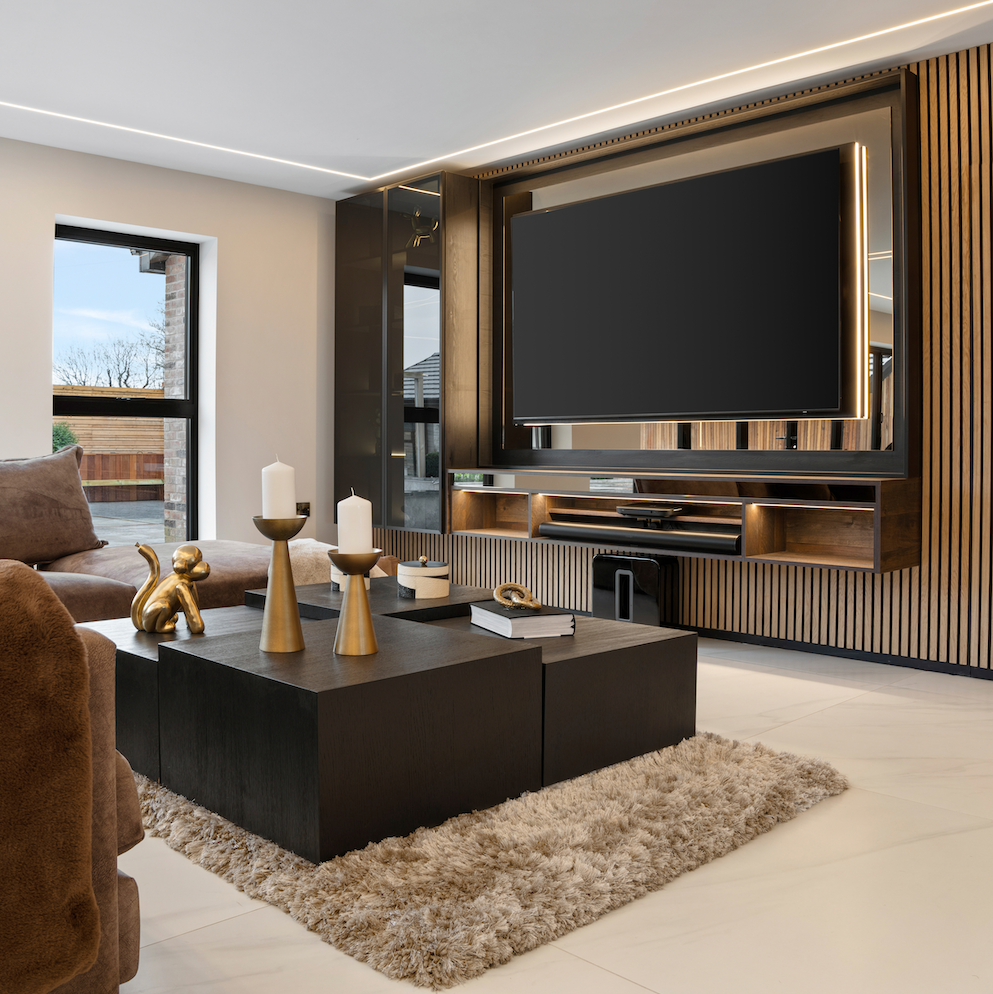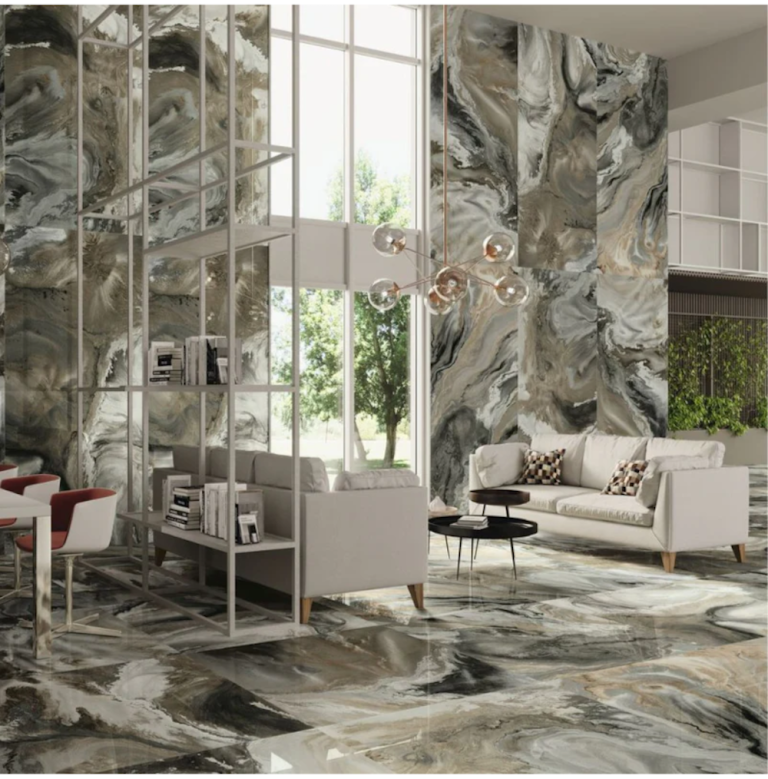Porcelain tiles are increasingly spilling out of bathrooms and kitchens thanks to award-winning designers like ROCCIA’s who are rewriting the rules on where tiles belong.
Porcelain tiles aren’t just for splashbacks and shower cubicles anymore – they’re staging a bold takeover in Britain’s living rooms, bedrooms and entranceways.
Inspired by the grandeur of palaces and five-star hotels, interior designers are using porcelain tiles to add architectural interest and instant luxury underfoot and overhead.
Showing how you can use tiles to break up large expanses in an interesting way – here are three recent projects ROCCIA’s luxury tiles have been used to create serious style statements.
Living Rooms Reimagined with Feature Wall Drama

In this living space, large-format porcelain tiles have been used to dramatic effect – as an eye-catching feature wall behind the sofa and to create a striking, continuous floor surface. The wall tiles have a book-matched onyx-inspired pattern in rich blacks, greys and warm veins of amber – so they mimic the luxurious look of natural stone but with the practicality of porcelain. The mirror-like polish and symmetrical pattern draw the eye up, giving the space real vertical drama and a boutique-hotel vibe.
The subtle panelling-effect tiles flanking the feature wall add texture and vertical lines without competing with the bold stone design – it’s a clever contrast that keeps the whole look sophisticated rather than overwhelming. Altogether, it shows how porcelain tiles can be used creatively for more than just bathrooms or kitchens – they’re a tool for creating architectural interest, layering texture and adding instant luxury underfoot and overhead.
Tiling the Unexpected: Bedrooms with a Luxe Edge

Bedrooms, too, are seeing the tiled treatment. In a striking modern suite, soft onyx marble-look porcelain tiles transform the floor into a high-gloss canvas that bounces sunlight onto vaulted ceilings and plush furnishings, turning an everyday sleep space into a calm, hotel-esque retreat. It’s proof that tiles can soften and elevate a room just as beautifully as wood or carpet – but with a practical, wipe-clean finish that lasts. Combined with plush soft furnishings, the tiled floor keeps things feeling crisp and clean, balancing out the cosy upholstered bed and fluffy textures.
Panelling with a Porcelain Twist

The trend doesn’t stop at showstopping stone effects. ROCCIA’s porcelain panelling-effect tiles are booming with homeowners who want the elegant look of traditional wood panelling, minus the hassle of sanding, warping or repainting. Laid vertically or horizontally, they add height, texture and a refined, heritage feel that’s as tough and low-maintenance as modern life demands.
“Tiles add depth and movement, like the play of light on water – something paint or wallpaper alone just can’t do,” says Ashif Kazee from ROCCIA’s design team. “The less conventional the better – we’re mixing tiles with bold wallpapers, matt black finishes and unexpected textures to make walls and floors architectural features in their own right.
“With sustainability high on the agenda, porcelain panelling is also a smart alternative to timber – durable, moisture-resistant and far kinder to forests. So, expect to see this trend only grow bolder: bigger slabs, deeper grooves, and statement finishes that take tiles well beyond the bathroom.”
Discover more at www.roccia.com



